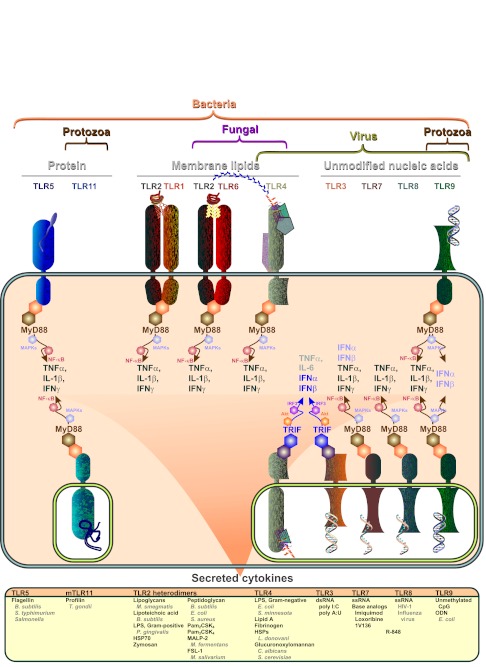Fig. 2.
Classification of Toll-like receptors (TLRs). All TLRs recognize bacteria pathogen-associated molecular patterns (PAMPs) of protein, lipid or nucleotide composition. Approximately half recognize viral PAMPs, either lipids or nucleotides. TLR2/6 and TLR4 recognize fungal PAMPs whereas TLR9 and TLR11 recognize protozoan PAMPs. Several of the TLRs respond to extracellular ligands (1, 2, 4, 5, 6, 9 and 10 not shown) whereas others localize to cellular vesicles and respond to PAMPs that have been internalized by the cell (3, 7, 8, 9 and murine 11; human TLR11 is a pseudogene). Although some of the TLRs also activate proliferation of immune cells through an Akt-dependent pathway (not shown), they all induce the expression and secretion of cytokines. Cytokine production is largely responsible for behavioral changes induced by infection. All TLRs shown (TLR10 cooperates with TLR2 to recognize triacylated lipoproteins but does not activate typical TLR signaling) (Guan et al., 2010), except TLR3, directly induce the expression of TNFα, IL-1β and IFNγ whereas TLR3, 4, 7 and 9 activation results primarily in IFNα and IFNβ expression (Hanke and Kielian, 2011). A brief list of PAMPs or active analogs is shown for each TLR. For definitions, see List of abbreviations.

